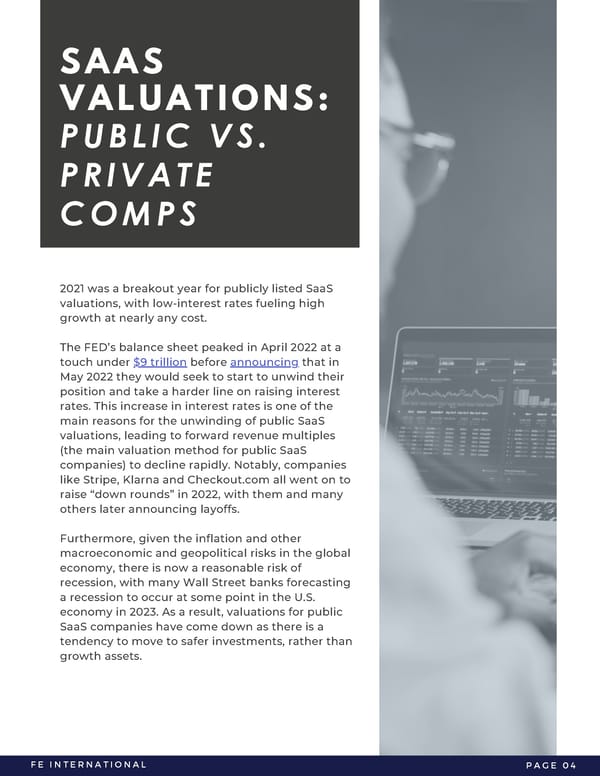SAAS VALUATIONS: PUBLIC VS. PRIVATE COMPS 2021 was a breakout year for publicly listed SaaS valuations, with low-interest rates fueling high growth at nearly any cost. The FED’s balance sheet peaked in April 2022 at a touch under $9 trillion before announcing that in May 2022 they would seek to start to unwind their position and take a harder line on raising interest rates. This increase in interest rates is one of the main reasons for the unwinding of public SaaS valuations, leading to forward revenue multiples (the main valuation method for public SaaS companies) to decline rapidly. Notably, companies like Stripe, Klarna and Checkout.com all went on to raise “down rounds” in 2022, with them and many others later announcing layoffs. Furthermore, given the inflation and other macroeconomic and geopolitical risks in the global economy, there is now a reasonable risk of recession, with many Wall Street banks forecasting a recession to occur at some point in the U.S. economy in 2023. As a result, valuations for public SaaS companies have come down as there is a tendency to move to safer investments, rather than growth assets. FE INTERNATIONAL PAGE 04
 2023 M&A Report | SaaS Page 5 Page 7
2023 M&A Report | SaaS Page 5 Page 7